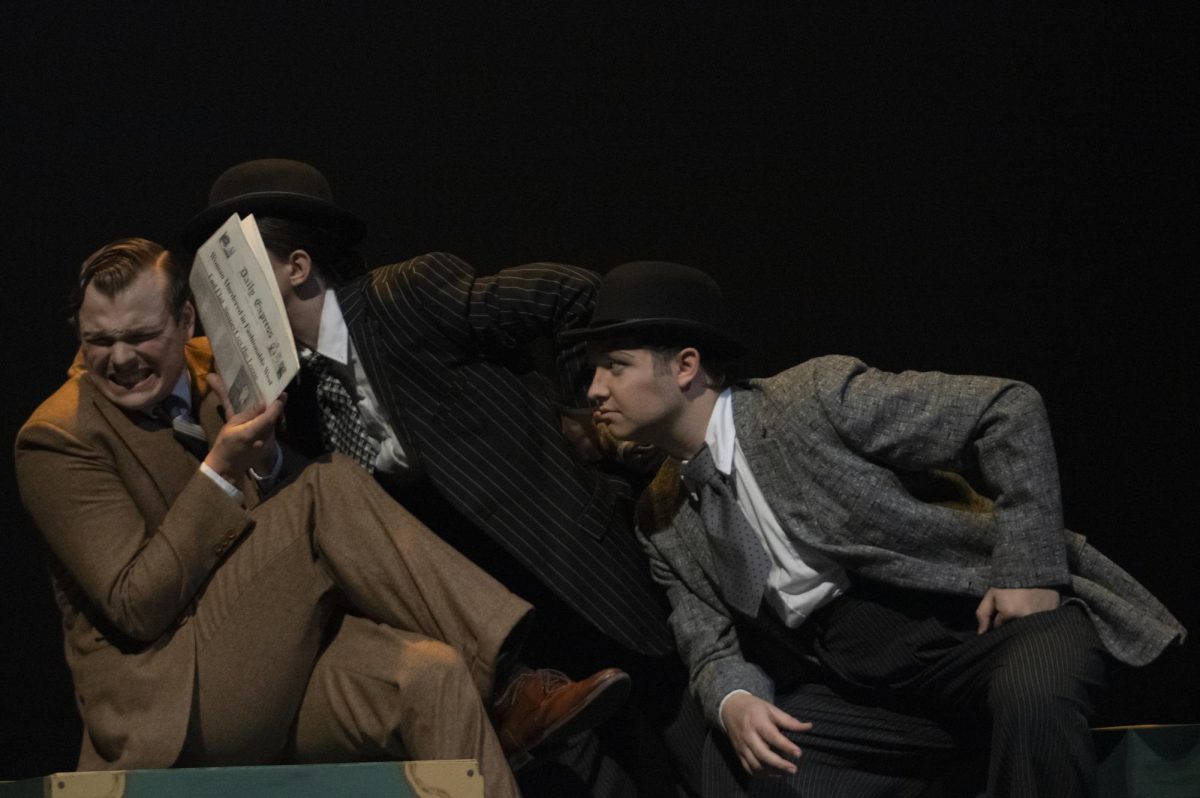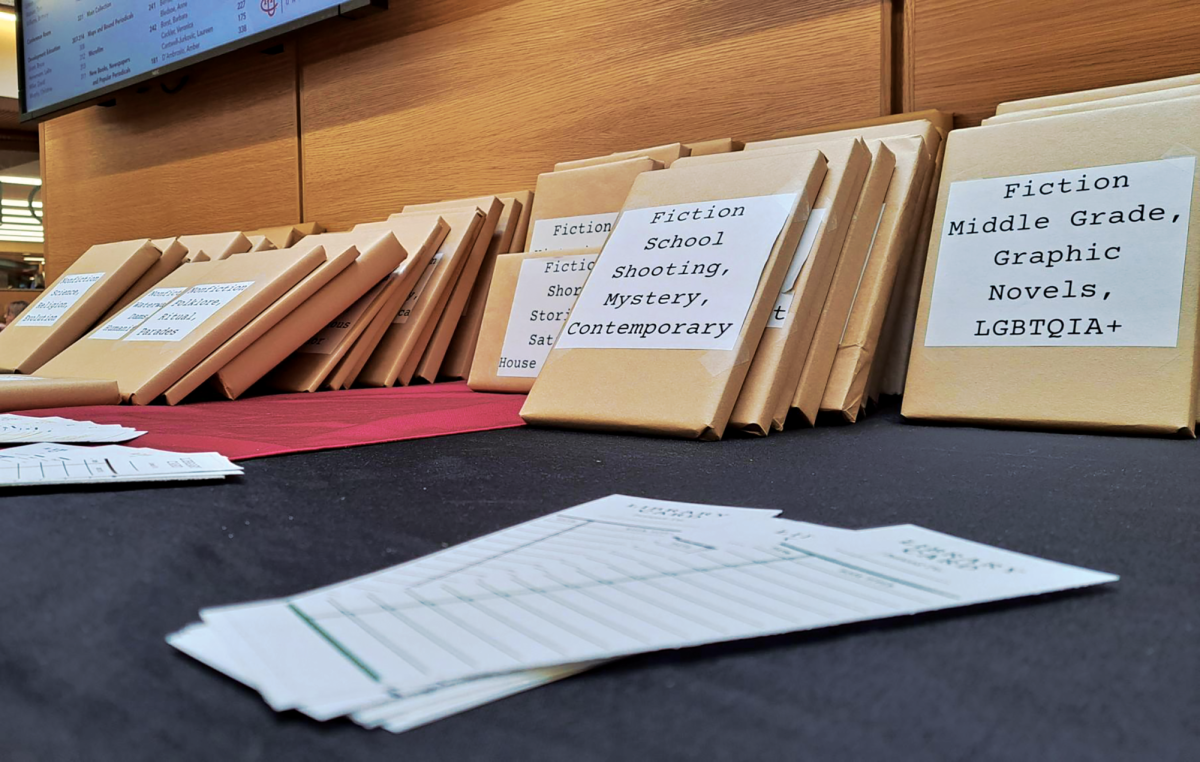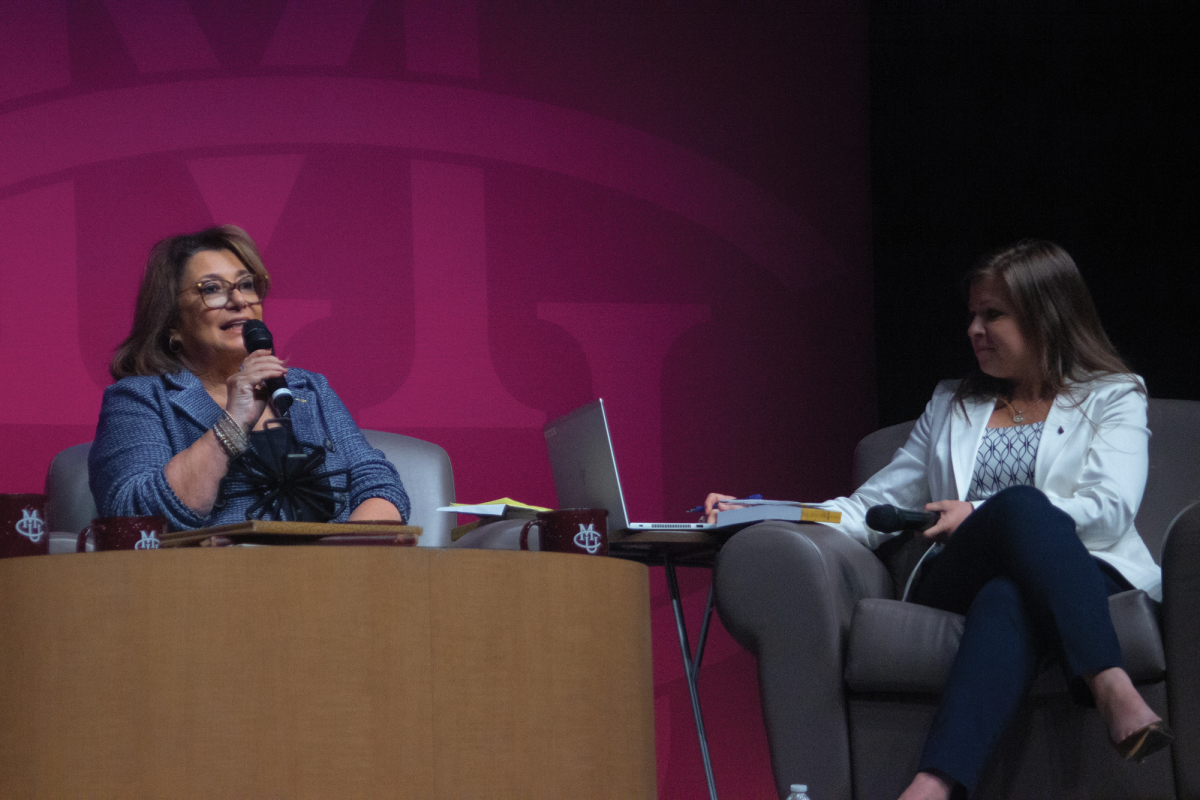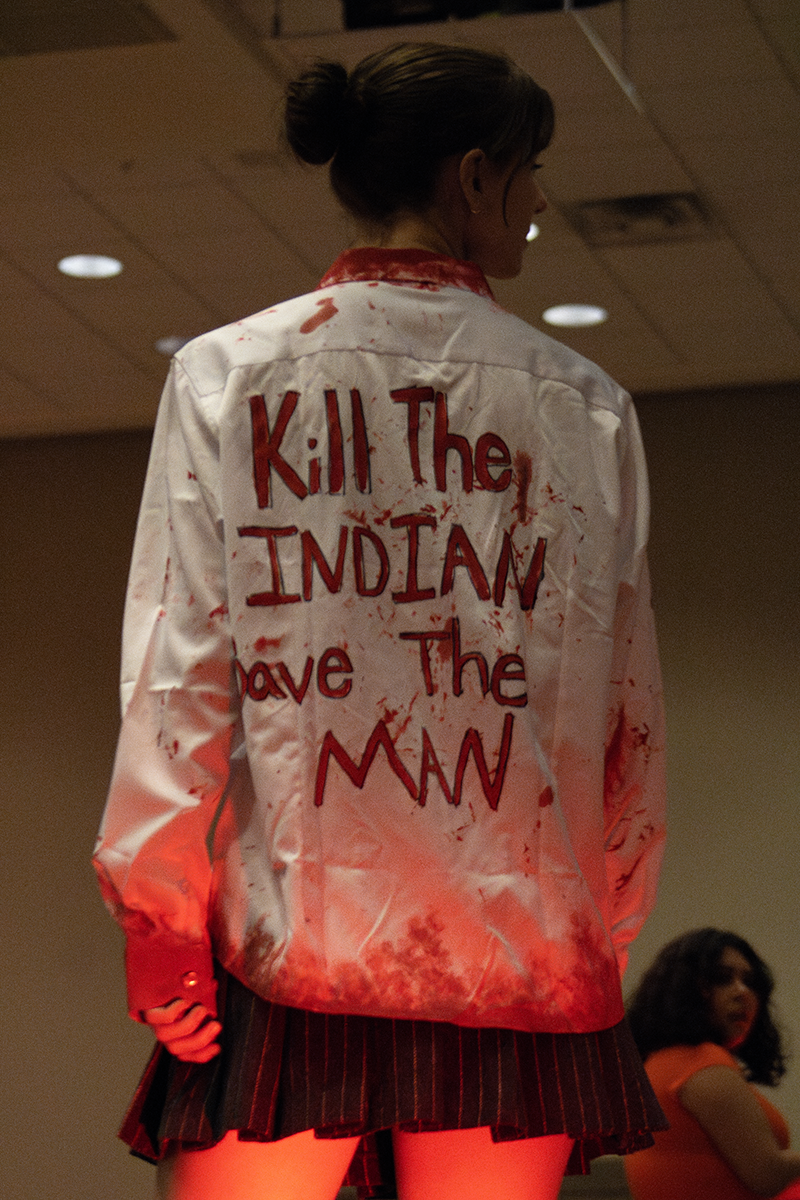Colorado Mesa University recently saw the wrap of “A Grand Night For Singing,” which closed on Oct. 7. The folks in the theater department rested for one day after the closing of the musical, and then began rehearsals for its next production, “Our Town.”
After the set for “Grand Night” was cleared away, the production designers for “Our Town” could move in and begin planning what they wanted their new show to look like. Because the play has a simple, minimalistic theme, the set and props will also be quite simple. The set designers have created a false wall for the back of the stage to serve as the main set.
While the cast is busy learning lines and musical numbers, the production team meets with the director of the show often to discuss set, lights, sound, costumes and all other aspects that go on behind the scenes of a show.
“Usually, the director comes up with a concept, and that’s kind of what you go with for the show,” Sarah Lachelt, a lighting designer, said.
When the director’s not around or busy with the cast Stage Manager Shailyn Clay is in charge of a production.
“I’m kind of a control freak, so being a stage manager, it is my job to know everything and all about this production,” Clay said.
She oversees all areas of production to make sure that people are where they need to be at all times, and that sets, lights and designs are all completed in a timely manner and that the show is running on schedule. “Our Town” will be the third CMU production that she has stage-managed.
“We typically have production meetings where we discuss all of these things, and then these designers take it into the shops and build them,” Clay said.
For “Our Town,” the crew has added an element called foley sound, which is when people create sound effects for things that are not really there.
“Most of the props are mimed, and then we have this foley aspect creating sounds for these situations,” Clay said.
There will be sound effects for things like pots and pans in the show, but the actors will not actually be holding pots and pans on stage.
“Our Town” also displays lots of shadow effects. Silhouettes will appear on the wall behind the actors where nothing is really there. The crew had about a week of table work to do before getting too deep into rehearsals, where they worked on character and show development. The cast for the show will be the largest cast of all the shows at CMU in the past couple years, according to Clay, with a cast of 30 and another 20 people involved in the show as technicians and crew members.
“Weirdly enough, I always feel like we don’t have enough people,” Clay said. “You get a certain amount of time to do this show, and you better hope it’s done by the time you’re going up because whether it’s ready or not, you’re going up.”
“My biggest struggle with the show, to begin with, is the fact that the palette of colors for the costumes is all really neutral, light, beige kind of colors. So my lights have to be really nice to where it doesn’t look like they’re lacking any hues of color,” Lachelt said.
Lachelt’s main job is to make sure that everyone on the stage is visible at all times. “Our Town” in particular has been a challenge because of its dark theme of life and death, which is difficult to incorporate into lights. The first read through a script tells the lighting director all they need to know about the story, including cues and information like time of day, weather and whether the scene is taking place inside or outside.
“Sometimes you really want to follow an example [from a script], other times, not so much,” Lachelt said.
[media-credit id=48 align=”alignleft” width=”300″] [/media-credit]
[/media-credit]
By talking to the director in production meetings, the lighting designer can begin to decide how closely the show should follow the script. Lighting also depends on the colors of costumes and sets. In “Our Town” many of the costumes will be simple colors like white and beige.
“White light on white is terrible,” Lachelt said.
Therefore, she has had to create a new kind of white light by mixing warm and cool colors together.
“The director really didn’t want oranges, and most warm colors are orange or yellow, so we ended up going towards pink,” Lachelt said.
She picked two colors, one warm and one cool, which were light and pale enough to help reference the time of day, and also make the director happy.
Lighting is used to make the stage look realistic even though the show takes place inside a dark theater. The lights bring up a “heightened reality”, as Lachelt described it, which makes things look more realistic than they would in the dark. Moonlight, for example, appears different on a stage because it is just theater, but lighting designers often try to capture real moonlight in the hues of their stage lights.
As lighting director, Lachelt isn’t required to attend every rehearsal, but she likes to watch a run-through of a show when she can.
“I have a pretty good idea of what happens and where it takes place because Shailyn has done an excellent job of spiking the floor of where things happen. So I can start programming my lights for cues ahead of time,” Lachelt said.
Lachelt will be required to attend rehearsals during tech week, which is meant for figuring out all the intricate technical details. The lighting designer is also required to attend all production meetings throughout the course of rehearsals, and to run a “hang and focus day”, where she will oversee where the lights are hung on the stage and how they are focused. The job also requires long nights of programming lights and double-checking cues.
This coming Saturday will be a 12-hour day for the crew of “Our Town.” They will work from 10:00 a.m. to 10:00 p.m. to run the show from cue to cue, working out transitions and blocking. The hardest of the work is yet to be done, and for the set designers, the job isn’t done until a set is broken down after closing night.








